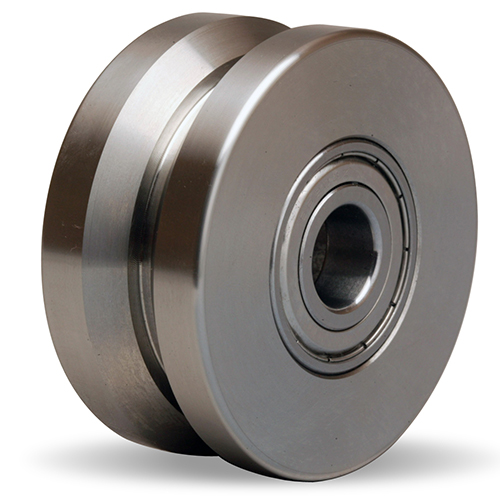Caster wheels are attached to a piece of furniture or to a cart in order to make the item mobile. The main considerations for selecting casters are the weight of the item and the ease of rolling the item.
Weight Considerations
Each caster will support a portion of the item’s weight. To determine the weight capacity needed for standard casters, divide the total maximum weight of the load by the number of casters. Add in a safety margin. For example, with a 33 per cent safety margin, a 3000-pound load should be supported by four casters that can each support 1200 pounds.
For levelling casters, divide the item’s maximum weight by two, and then add in a safety factor. Levelling castors support the entire item on two wheels as the load is moved.
Remember to account for all parts of the load when calculating the maximum load. For example, casters on a desk chair will support both the chair and the person sitting on it. In general, larger wheels can carry heavier loads. When shopping online for casters, look for weight capacity information in the specifications.
Some specifications distinguish between dynamic and static capacity. Dynamic capacity refers to loads in motion, and static capacity refers to stationary loads. Evaluate the caster based on the intended use. If the item will mostly stay in one place, such as a printer, then the static capacity matters most. Dynamic capacity will apply in the case of frequently moved items such as industrial carts.
If you plan to use the casters in an unusual environment, look carefully at how the dynamic capacity was measured. The rating depends on assumptions about movement frequency and speed. Your conditions may involve greater speeds and more constant movement. Contact the manufacturer for recommendations before proceeding with your purchase.
Ease of Rolling
Casters keep people from having to repeatedly lift the full weight of objects. Instead, people push and pull objects mounted on casters. Therefore, proper selection of casters helps to prevent strain injuries from pulling. Manufacturers recommend ball bearings or roller bearings.
The larger the wheel diameter, the easier it is to roll the item. Larger also handle floor defects such as gauges more easily. Examine the floors where you intend to use the casters for door thresholds and cracks. Wheel materials also impact movement. Harder wheels move more easily. On the other hand, a softer wheel material can better handle uneven floors.
When buying casters, make sure that your selection will adequately support and move the weight of the loads that you expect. For specific recommendations for a particular application, contact a knowledgeable dealer.





